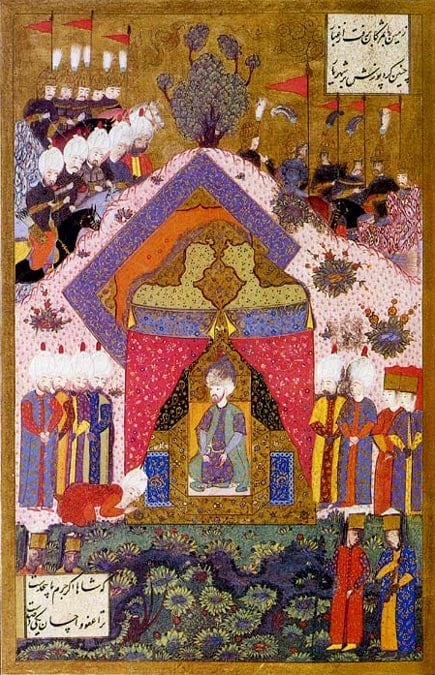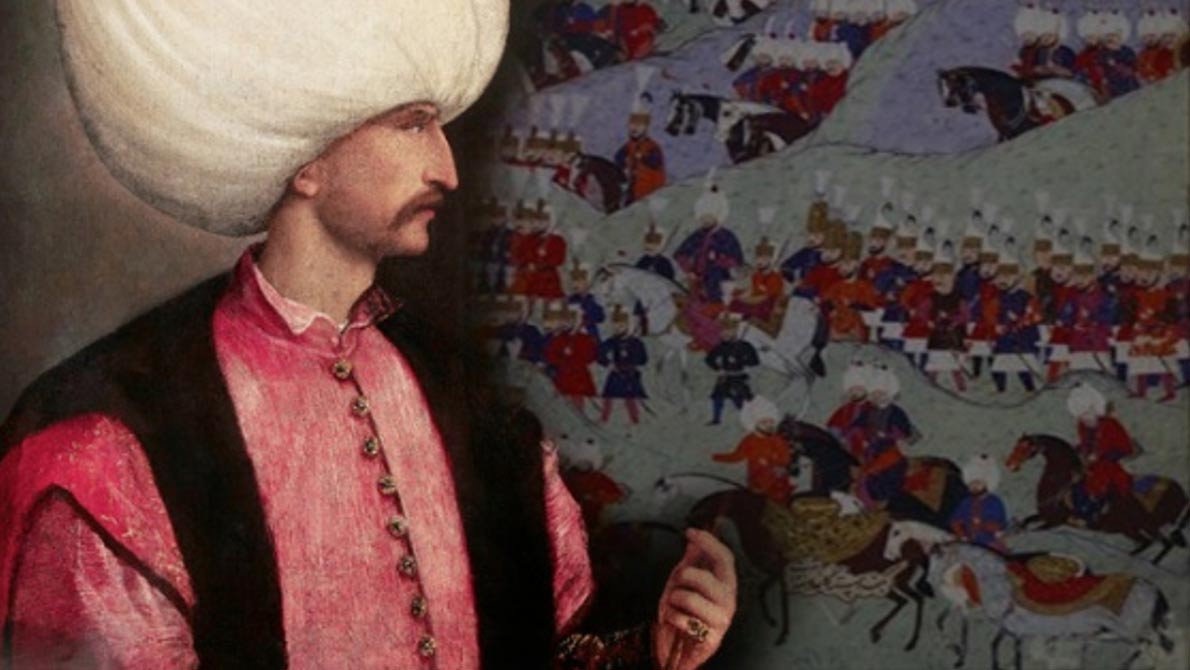Long-Lost Tomb Belonging to Suleiman the Magnificent Believed to be Found
When Suleiman the Magnificent died —once one of the most powerful and longest-reigning rulers of the Ottoman Empire— it is said his heart and body were separated and buried in two secret locations. Researchers say they may have discovered the long-lost tomb believed to have been built over the spot where Suleiman’s tent once stood, and where he died.
LiveScience reports that excavations over the last three years have centered in southern Hungary, based upon historical records and archival registers surrounding the siege of the fortress of Szigetva.
Suleiman’s Secret Death
The 71-year-old sultan died at Szigetvar in 1566 as his troops besieged its fortress, but before they saw final victory. The castle was defended by Croatian-Hungarian nobleman Miklos Zrinyi and locals. Suleiman (Süleyman) was an important figure and his death in the imperial tent was kept a secret from his troops for some 48 days. Historians say that to maintain the illusion that he still lived, the sultan’s advisors forged his handwriting on official documents, dressed in his clothing, and smuggled his body out in a servant’s coffin.
The charade was to avoid conflict and upheaval before the succession of Suleiman’s son, Selim II.

Suleiman the Magnificent, circa 1530. (Public Domain)
It is believed that Suleiman’s heart and internal organs may have been buried at a memorial tomb in the former Ottoman settlement of Turbek, which was destroyed in the 1680s. His embalmed body was buried in Istanbul in Turkey (then Constantinople) and is now housed at the Süleymaniye Mosque.
- Researchers getting warmer in the hunt for heart of Suleiman the Magnificent
- Archaeologists search for ‘lost heart’ of Suleiman the Magnificent
Long Lost Tomb Uncovered by Researchers
Scientists used remote sensing equipment and detected several buildings that seemed to mimic design elements of Suleiman’s mausoleum in Istanbul, Turkey.

Türbe (tomb) of Sultan Suleiman at Süleymaniye Mosque, Istanbul, Turkey. (CC BY-SA 3.0)
Norbert Pap, head of the department of Political Geography, Regional and Development Studies at the University of Pecs in Hungary led the excavations said some other buried structures near the tomb, are likely to be a small mosque and a dervish monastery, reports The Washington Post.
Günhan Börekçi, historian at İstanbul Şehir University, who was not involved in the excavations told LiveScience about the possibility that they’ve struck the right tomb, “We know from archival registers what kind of a structure it was. This was Hungary, so it's a little far away from the capital. It's not something really huge, it's a relatively small one, like the ones we see constructed for dignitaries of the era.”

Funeral of the Ottoman Sultan Suleiman the Magnificent (Public Domain)
Excavations have revealed a large brick building with a central room about 26 feet by 26 feet (8 by 8 meters). 17 th century looters dug a trench straight through the middle, but fortunately the walls still remain covered in stone tiles, and decorative elements remain intact. These designs echo those found in Suleiman's mausoleum, Pap said. One of the buildings is said to be oriented towards Mecca, and objects were also reportedly found that corroborate Suleiman’s presence.
Pap weighed the potential of this being the correct site, saying “Currently everything suggests that this building could have been Suleiman's tomb. However, in order to be able to assert this with 100 percent certainty, further examinations and the excavations of the other surrounding buildings are necessary.”
Excavation work at the site is slated to restart in April.
- Elizabeth Bathory – 16th century deranged serial killer or victim of betrayal?
- Discovery of Attila the Hun tomb in Hungary is a hoax
Suleiman’s Magnificent Rule
Suleiman the Magnificent was the tenth and longest-reigning Sultan of the Ottoman Empire, until his death in 1566. “He rose to the throne in 1520 at the tender age of 26 and quickly began a series of military campaigns, expanding Ottoman control from Algiers in the west to Baghdad in the east,” writes LiveScience. Suleiman was well known for overseeing the "Golden" age of the Ottoman Empire.

Suleiman the Magnificent receives an ambassador. (Public Domain)
In this the sultan is known for the many major gains to society, taxation, religious tolerance, taxation and criminal law during his 46-year reign. He was an esteemed poet, and a great patron of culture, advancing artistic, architectural and literary development.
He shook up longstanding tradition and rattled the court by marrying his beloved, Hürrem Sultan, or Roxelana, a Christian harem girl of Ruthenian (Ukranian) origins. He was said to be infatuated with her, and housed her with him for the rest of their days.

16th-century oil painting of Hürrem Sultan (Public domain)
Suleiman’s rule truly seemed to have been magnificent, for after his death the empire went into decline. There were no more conquests, and the military suffered major defeats in Europe. Eventually, Christian powers gained technology and weapons and outstripped the Ottomans, and the empire was defeated and dismembered following World War I.
Featured Image: Suleiman the Magnificent, circa 1530. (Public Domain)
By: Liz Leafloor


















